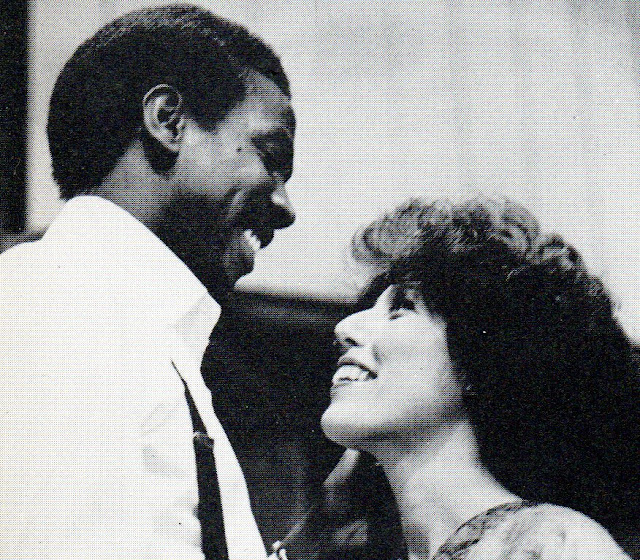 |
| Lou Gossett, Barbara Colby. |
 |
| Humbert Allen Astredo, Jean-Pierre Aumont, Donald Symington, Richard Easton. |
A wordy, semi-documentary, political drama by a former Irish
representative to the United Nations and a special representative of that body
to Katanga in 1961. His belief, outlined in the play, was that the death of
Congolese leader Patrice Lumumba (Lou Gossett) in 1961 could have been averted if UN
Secretary-General Dag Hammerskjold (Jean-Pierre Aumont), presented here as gay,
had intervened.
Hammerskjold’s ostensible reason for his decision was his
fear that Lumumba would turn for support of his political aims in achieving
freedom for the Congo from foreign capitalist exploitation by turning to the
Communist bloc, thereby threatening world peace. Seven months after Lumumba’s
assassination, Hammerskjold was himself killed in a plane crash in the Congo. O’
Brien’s thesis is that he died as the result of a saboteur’s bomb, arranged for
by European capitalists.
The drama sat not very well with most critics, although
Clive Barnes thought it “a good, controversial political play—it excites the
mind and . . . deserves to be seen.” The degree of subjectivity involved in the
depiction of personalities and events was a major bone of contention, some
arguing that the author was biased, others that his ideas were based on
documented fact. The production, which incorporated film clips and projections,
as well as the placement of actors in the audience, tried to suggest a
dispassionate explication of the situations, but the result for many was an
excess of didacticism.
The obscure subject (for most New York theatregoers, anyway) and the
difficulty of transferring it to a play led to “a hodgepodge,” wrote John
Simon, “muddled and strangely undramatic.” The acting of the large company
ranged from poor to adequate, but there was a considerable number who said
that Lou Gossett was outstanding. Also, those who saw both productions felt that the New
York staging seemed less secure than its original, which premiered in 1970 at
the Mark Taper Forum in Los Angeles.
The substantial cast included Donald Symington, Richard
Easton, Barbara Colby, Richard Venture, Humbert Allen Astredo, and John Baragrey.